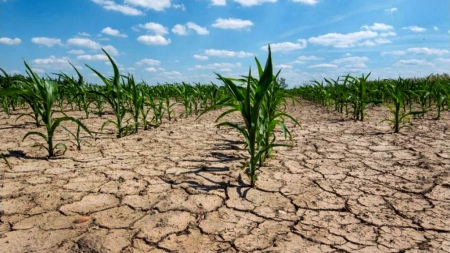The National Drought Monitoring Board identified in its last report the presence of 140 million hectares affected by droughts in Argentina, of which more than 7 million, classified under the category of “severe affectation”, are concentrated in the so-called agricultural core area.
In this last category, three affected provinces were identified, according to the latest report from the National Monitoring Table: Buenos Aires (44 districts), Santa Fe (4) and Entre Ríos (5).
Regarding precipitation, last September and October “the lack of rain in the center-east of the country was accentuated, aggravating the impacts of the drought, especially in the Core Zone.”
The so-called National Drought Monitoring Board is made up of specialists from national institutions that make up the Network of Scientific-Technical Organizations for Disaster Risk Management (Red GIRCyT), including Conicet, the National Meteorological Service (SMN), the Commission Institute of Atomic Energy (CNEA), the National Institute of Agricultural Technology (INTA), the National Institute of Industrial Technology (INTI), the National Institute of Water (INA) and the National Commission for Space Activities (Conae), the Geographic Institute National (IGN) and the Naval Hydrography Service (SHN).
Its reports reflect the alert levels set according to the combination for each region of the country of different indicators and pre-established thresholds, all within the framework of an “Interinstitutional Protocol for Information Management against the threat of Meteorological and Agricultural Droughts in the Argentine territory.

In this framework, in its latest report, which compiles information up to last October, the analysis highlighted that “the accumulated precipitation deficit in the core zone between 2020 and 2022 is lower than that registered between 2007 and 2009, one of the most intense droughts that have affected the region”.
In addition, according to the report, the soil moisture indices show extreme drought conditions in the north of Buenos Aires and the south of Santa Fe.
In turn, from the National Drought Monitoring Board they explained that “the current condition of crops, both extensive and intensive, in the north of Buenos Aires is affected, in such a way that yields are expected to be well below the historical average , and even total losses and reduction of the planted area”.
In this line, they advanced that it is probable “that the wheat that was sown in the area with current severe drought will have very low yields or will not be harvested and that the corn will reach the beginning of its critical period of drought with scarce or deficit reserves.”
“There is also an impact on livestock activity; it is expected that in many cases it will not be possible to plant crops and this area will eventually be used for soybeans or late corn,” they concluded.
















